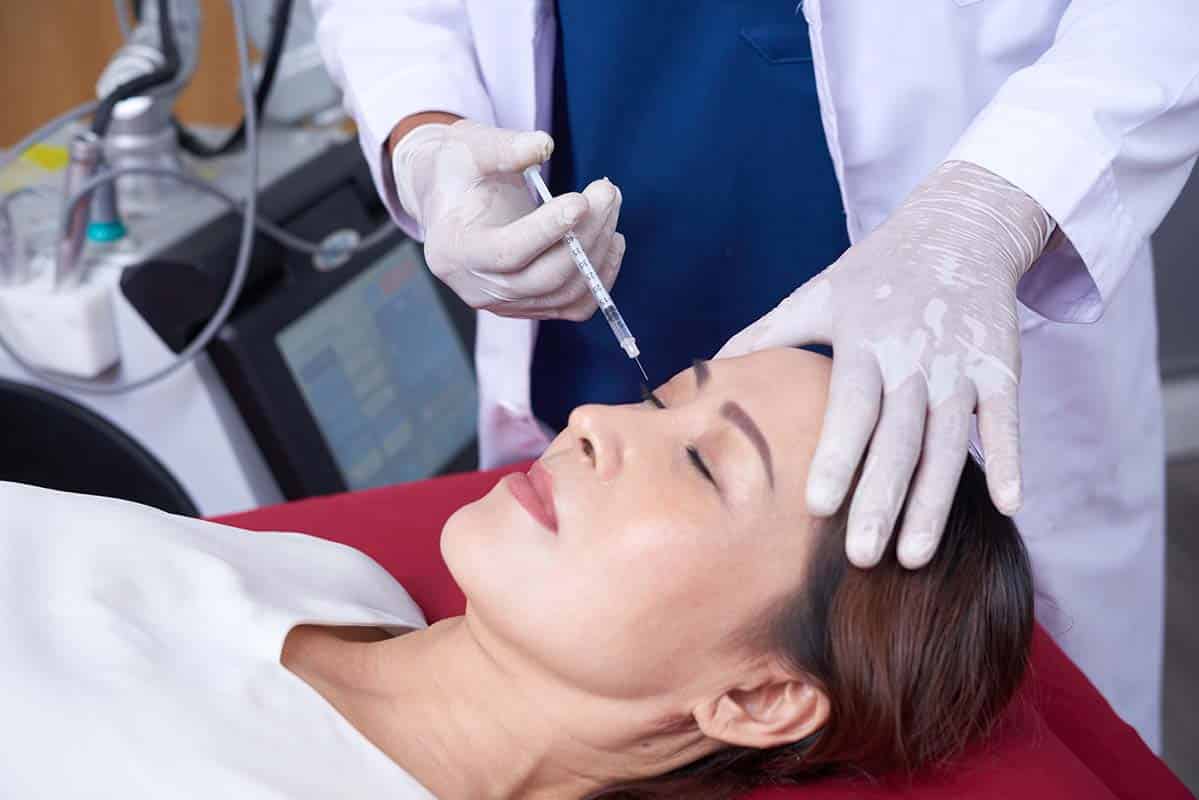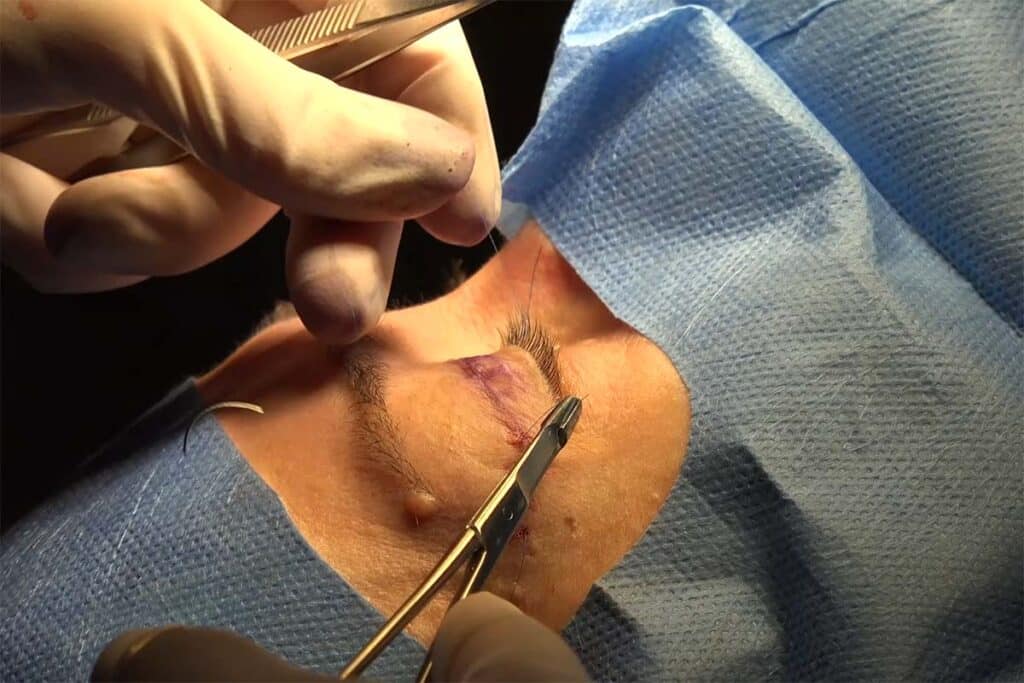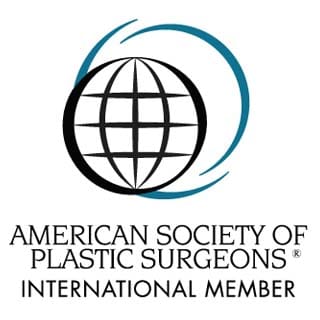
When it comes to non-surgical rejuvenation techniques, Botox undoubtedly takes one of the top positions. It is a highly sought-after treatment with over 5 million people having it each year (source: https://www.plasticsurgery.org/news/blog/taking-the-mystery-out-of-botox-and-dermal-fillers).
The procedure takes just a few minutes and is very effective in erasing wrinkles on the forehead, around the eyes and mouth.
Furthermore, this rejuvenation method has a quite good safe history. Despite that, as with any procedure, there is always the possibility of something going wrong. This is especially true if the Botox injection is administered by someone who doesn’t have the necessary skills and training.
One very rare, but still possible complication of Botox treatment, is a condition called ptosis or droopy eyelids. It is where the upper eyelids fall down, covering the eyes. It can negatively affect your appearance because it can make your eyes look tired and less apparent.
But what might be the reason for developing ptosis following Botox and how soon it shows up? Is this problem permanent and what you can do to fix it? Please continue reading if you want to know the answers to these questions!

Botox or Botulinum toxin type A is an injectable treatment designed to reduce lines and wrinkles caused by muscle movements, the so-called dynamic wrinkles. It is commonly used in areas like the forehead, between the eyebrows and around the eyes. What the injection does is temporary stops the contractions of the facial muscles by blocking certain chemical signals from nerves. This, in turn, causes the muscles to relax and the unwanted creases to soften.
The Botox procedure is normally completed within a few minutes, and in most cases, there is no downtime involved. Although administering such an injection may seem straightforward, it requires a good deal of expertise and knowledge. The doctor should have the necessary education and extensive facial anatomy training to do the treatment correctly and safely.
Before performing Botox injections, the provider must carefully examine the patient's skin. He or she must determine where and at what depth to inject the Botulinum toxin. Sometimes, even minor mistakes in calculation can cause the substance to migrate to the surface, resulting in eyelid or brow ptosis.
Botox injections can take time to set, they do not usually work instantly. The effect of the substance typically peaks between the third and tenth day and can take up to 14 days for the full effects of Botox injections to be visible. This means that ptosis will occur within this time frame if it occurs at all. In rare cases, the eye droop may seem apparent immediately after your Botox treatment. Nevertheless, if your upper eyelids do not droop 1 or 2 weeks after the procedure, then you are out of risk (learn more about the ptosis risk factors here)
Experiencing droopy eyelids after Botox can be quite frustrating and unpleasant. It can change the appearance of your eyes and, in severe cases, impair your vision. The good news is that this side effect is temporary, just like the effect of the Botox injection. However, while Botox may last up to six months, ptosis often goes away within five to six weeks. Furthermore, there are some treatment options available to help you get rid of this problem faster.
Droopy eyelids after Botox occur when the toxin moves into the lids and interferes with the function of the levator palpebrae, the muscle responsible for lifting the eyelid. This normally happens when the injection is applied in the area between the eyes to minimize frown lines.
But what can cause Botulinum toxin to migrate into a certain area? It might be due to incorrect administration of the injection or because of using a higher dose of the neurotoxin. Excessive touching or rubbing of the area immediately after the treatment may also cause your eyelid to droop.
Brow droopiness, in the same way as lid droopiness, is caused by Botulinum toxin migration. It could be due to administering the injection in the wrong location or injecting a larger amount of the substance.
Brow ptosis is more likely to occur after treating the forehead area. If the injection is given too low into the frontalis muscles, it can disrupt their normal function and cause them to relax excessively.
Ptosis usually occurs a few days after injection of Botox and in most cases, it resolves on its own after about a month. However, sometimes the droopiness may take longer to disappear.
There are some treatments that may help you speed up the process and get rid of this "bad Botox" effect. Here are your options.
A certain kind of eye drop known as apraclonidine can help you deal with Botox-induced lid ptosis. Using 0,5% of this medication, a few times a day can stimulate the Muller’s muscle, which is adjacent to the levator muscle and helps lift the upper lid.
The eye drops can be beneficial for addressing lid ptosis from Botox. However, be sure to consult a doctor before trying this treatment option.
Another quick way to reduce the appearance of droopy eyelids is to simply get more Botox. It will help to relax the brow muscles. However, before getting any additional Botox injections make sure that you find an experienced specialist. It is essential that the procedure is carried out by a professional who knows exactly where to inject the solution in order to successfully correct your droopy brows.
If you experience a droopy eyelid or droopy eyebrows after your facial rejuvenation treatment, make sure to consult a doctor. He or she will determine the severity of your ptosis and decide whether you need additional Botox injected or eye drops.
Can you really prevent a drooping eyelid after Botox? Of course, you can and one of the best ways to do so is to find a professional who has enough experience and knowledge to do the treatment correctly. The injector should carefully examine your skin and face. He or she must also determine the precise dose, the exact location, and select the most suitable injection technique.
Also, prior to treatment, it is essential to inform your doctor if you have used any blood thinner or muscle relaxer in the past several months. Additionally, be sure to tell the provider if you have any allergies, have had a traumatic facial injury or have been diagnosed with Bell's Palsy.
After your Botox procedure, make sure you do not touch or rub the injected treatment area to avoid migration of the toxin.

Ptosis can occur as a side effect of Botox, but it is usually temporary. It is possible, however, that some people will suffer from permanent ptosis as a result of their age, genetics, or medical condition. In these cases, eye drops such as apraclonidine or Botox injections might be not able to correct the problem.
Eyelid surgery is one of the best ways to fix true eyelid ptosis. There are several types of procedures you can get to improve the appearance of your eyes including blepharoplasty, brow lift and ptosis surgery. Which one will be the best treatment option for you depends on your particular problem.
If you have excess upper eyelid skin which hangs above your eyes and makes them look less prominent then you might benefit from blepharoplasty. This is a surgery which removes excess eyelid skin and fat giving you a younger appearance.
A brow lift is another rejuvenation procedure which can help you deal with drooping eyebrows and wrinkles in the forehead. During this treatment, the doctor lifts the forehead and brows into a new position. The brow lift can be also combined with blepharoplasty to achieve even better results.
In case one or both of your upper eyelids droop down and impair your vision or maybe just affect your appearance then ptosis surgery might be your best bet. Through this procedure, the plastic surgeon tightens the levator palpebrae superioris muscle (that elevates the eyelid) in order to achieve a better position of the upper lids. This is one of the best ways to treat eyelid ptosis.

Dr. Shenthilkumar Naidu (Dr. Shens) is a Ministry of Health accredited Consultatn Plastic Surgeon with extensive expertise in cosmetic and reconstructive surgery. He is renowned for his advanced techniques in body contouring and aesthetic enhancements. For more information, visit Shens Clinic.
Monday – Friday: 09:00am – 06:00pm
Saturday: 09:00am – 02:00pm
Sun and PH: Closed
(Strictly by appointment only)

Copyright ⓒ Shens Clinic | Privacy Policy | Terms and Conditions .